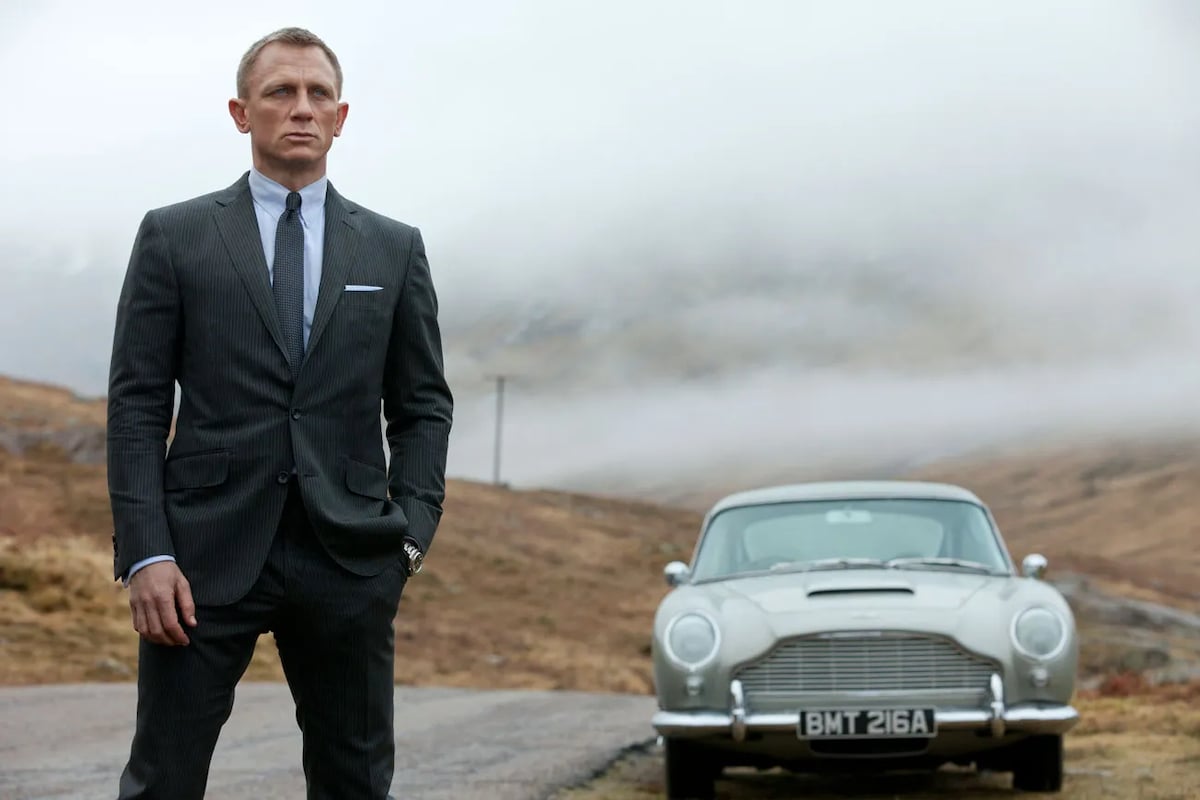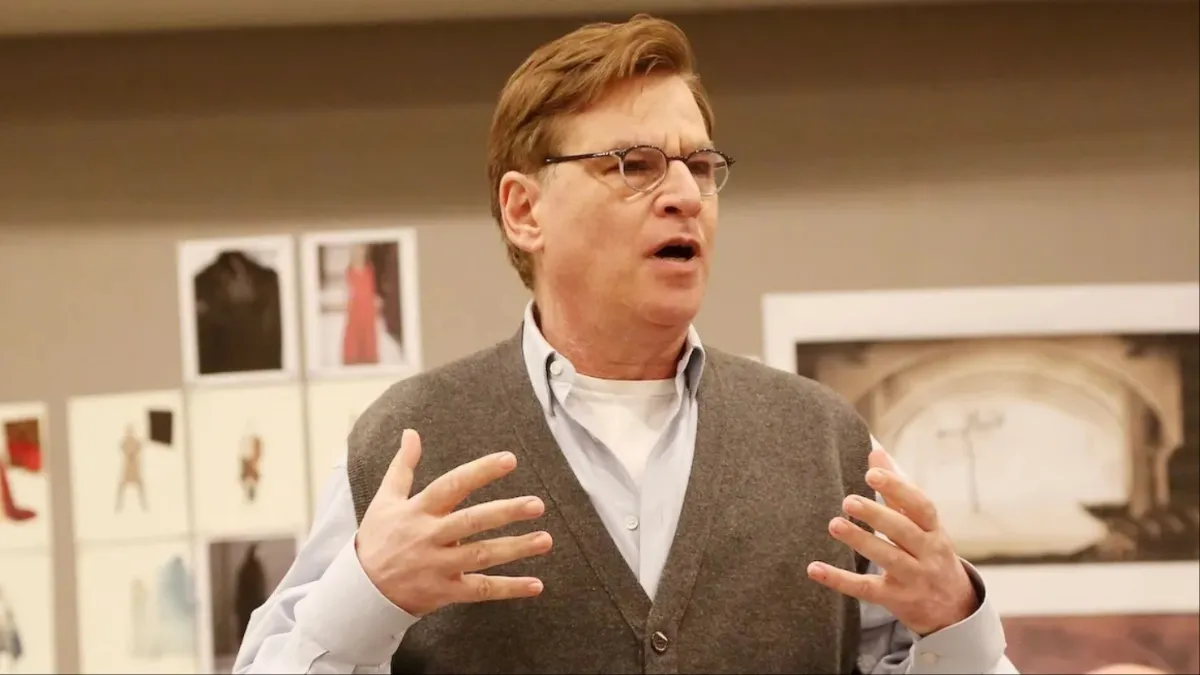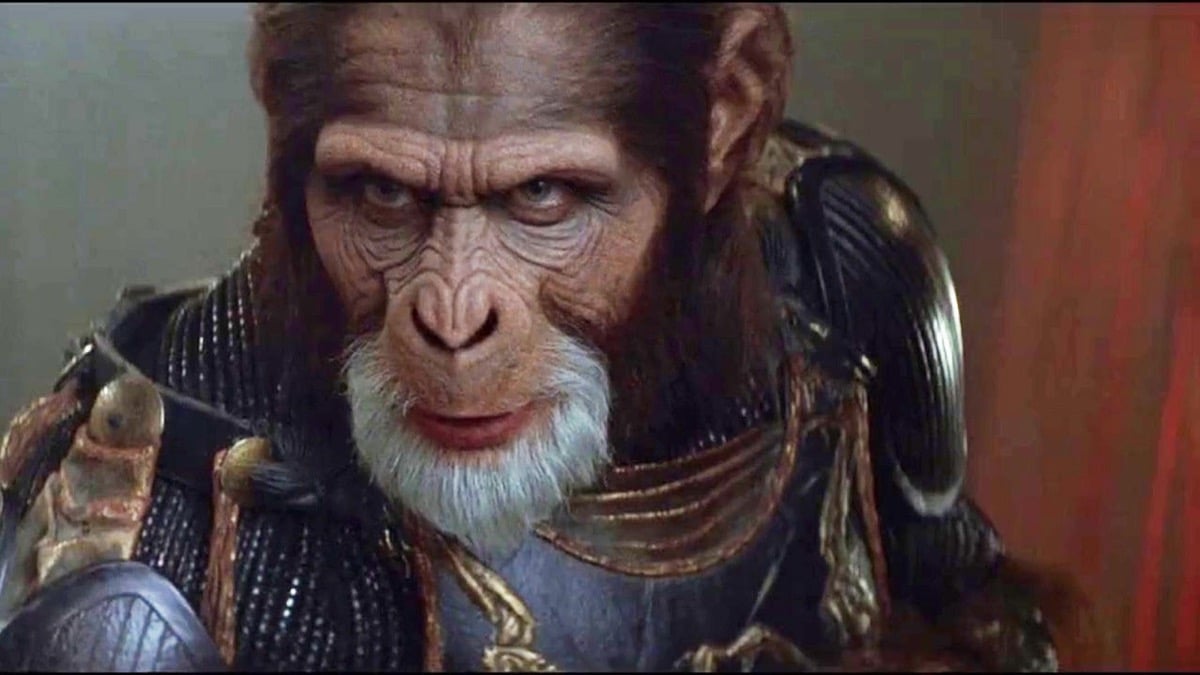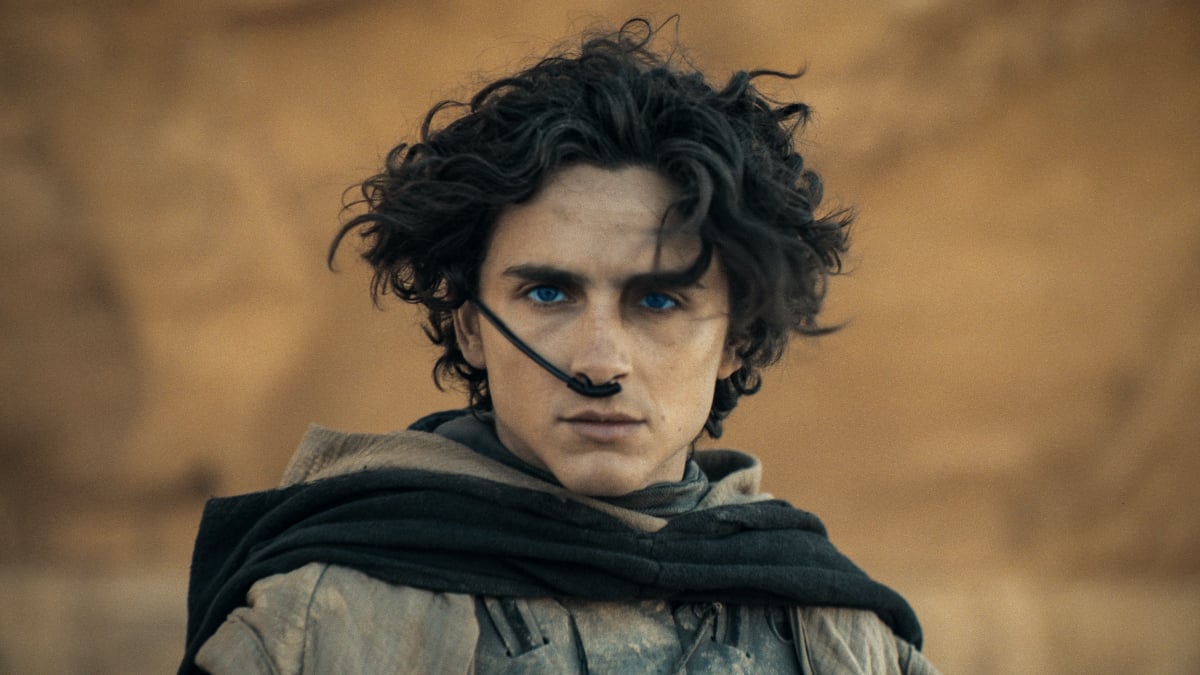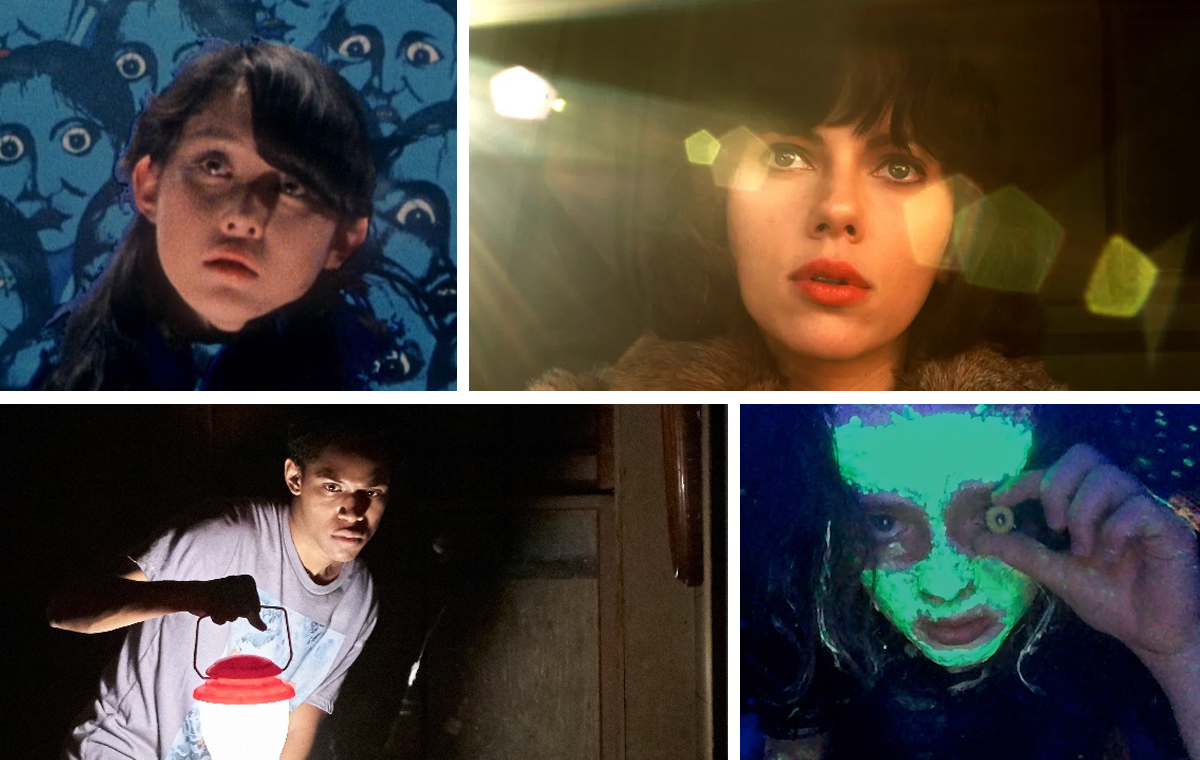There’s probably no need to introduce a character like “Bond, James Bond”—he is the most famous fictional spy of them all, after all. Born from the pen of British novelist Ian Fleming in the ’50s, Bond—the MI6 secret agent known as 007, with the 00 designating his license to kill—made his transition to the silver screen in the early ’60s and has been a staple at the box office ever since, despite multiple recasts.
So if you’re looking to do a rewatch of the entire saga or just want to freshen up your memory, here’s a complete list of all the movies featuring James Bond that have been released so far—the ones released by Eon Productions, at least, the company that holds the adaptation rights to all of Fleming’s works.
Dr. No (1962)
Dr. No is the very first movie adapted from Ian Fleming’s James Bond series, and as such, it introduces many elements that have by now become iconic pillars of this particular movie franchise—the man playing James Bond, Sean Connery, the title sequence starting with a view of Bond through the end of a gun barrel, the theme music itself, and the very first Bond girl, Honey Ryder, played by actress Ursula Andress. The plot of Dr. No follows James Bond as he clashes with the evil genius who gives the movie its name, a member of the criminal organization SPECTRE who is hellbent on disrupting the launch of NASA’s Project Mercury.
From Russia with Love (1963)
The second instalment of the James Bond saga saw both director Terence Young and lead actor Sean Connery return to the world of spies with a licence to kill. In this new adventure, Bond clashes once more with the SPECTRE organisation. This time, he’s up against a couple of Soviet criminals who seek vengeance against Bond for the events of Dr. No. They also recruit the movie’s new Bond girl, Tatiana Romanova—played by actress Daniela Bianchi—to unwittingly help them in their plan.
Goldfinger (1964)
One of the most beloved and famous installments in the saga, Goldfinger, directed by Guy Hamilton, was the very first Bond movie to win an Oscar—Best Sound Editing—and is also credited with starting another wave of trends that have by now become staples of the franchise, like Bond’s wide selection of gadgets and a massive opening credits sequence. In Goldfinger, Sean Connery’s Bond investigates gold magnate Auric Goldfinger, played by Gert Fröbe, and tries to sabotage his plans of contaminating the United States Bullion Depository. In doing so he’s helped by another iconic Bond Girl, Pussy Galore, played by actress Honor Blackman.
Thunderball (1965)
Director Terence Young is back at the helm of the fourth instalment in the Bond franchise, Thunderball, where Connery’s 007 is on the hunt for two atomic bombs belonging to NATO which have been stolen by—you guessed it—SPECTRE operatives. The criminal organisation uses the threat of dropping these two bombs on unspecified locations in the United Kingdom or the United States to demand a payment of £100 million in the form of diamonds. Bond will eventually clash with the second-in-command of the entire SPECTRE organisation, Emilio Largo, played by actor Adolfo Celi. He will do so with the help of CIA agent Felix Leiter, a recurring character throughout the franchise, and Largo’s mistress, Domino Derval, played by Rik Van Nutter and Claudine Auger, respectively.
You Only Live Twice (1967)
You Only Live Twice introduces director Lewis Gilbert to the Bond franchise, who went on to helm two more 007 movies in the Roger Moore era. As for this movie, which is Sean Connery’s penultimate Bond film, Bond is sent to Japan to investigate the mysterious disappearance of both American and Soviet in-orbit spacecraft. Both countries are blaming each other since the story is set right in the middle of the Cold War. On a remote Japanese island, Bond comes face to face with another one of the franchise’s major villains and incidentally the head of the SPECTRE organization, Ernst Stavro Blofeld—complete with revolving chair and fluffy white cat—played by actor Donald Pleasence.
On Her Majesty’s Secret Service (1969)
On Her Majesty’s Secret Service, directed by Peter R. Hunt, is the first and only time actor George Lazenby played James Bond, a brief intermission in between two Sean Connery movies. The story sees 007 clash with Blofeld once more—this time, SPECTRE’s evil mastermind is played by actor Telly Savalas—and does his best to sabotage his plan of making all plants and livestock around the world infertile. It’s also the first time Bond gets married at the end of the story after he meets and falls in love with Contessa Teresa di Vicenzo, played by actress Diana Rigg.
Diamonds Are Forever (1971)
Diamonds Are Forever marks the end of the Sean Connery era of Bond movies—even though he had supposedly retired after You Only Live Twice. Guy Hamilton is back as director, helming this story about Bond impersonating a diamond smuggler to infiltrate underground smuggling rings and discover the new evil plot by his old nemesis Blofeld—played by actor Charles Gray—who plans to use the diamonds to build a space laser and destroy Washington D.C. with it.
Live and Let Die (1973)
Directed once more by Guy Hamilton, Live and Let Die is the first Bond movie of the Roger Moore era—which will continue for five more installments. The plot follows 007 as he becomes entangled with Dr. Kananga, played by actor Yaphet Kotto, a Caribbean dictator who owns an island filled with opium poppy farms and plans to completely upheave New York City’s drug scene. While the movie features the first African-American Bond girl of the franchise, Rosie Carver, played by actress Gloria Hendry, it also falls into many a derogative cliché about the Black community.
The Man with the Golden Gun (1974)
The Man with the Golden Gun is the last movie in the franchise directed by Guy Hamilton, and it features Roger Moore once more as everyone’s favorite 00 agent. In this movie, Bond is put on the trail of a device that is supposed to be the solution to the energy shortages of the time—of course, this will lead him to cross paths with the assassin Francisco Scaramanga, the titular “man with the golden gun,” played by none other than Christopher Lee.
The Spy Who Loved Me (1977)
Lewis Gilbert, who had already helmed You Only Live Twice, returns to direct The Spy Who Loved Me, which sees Roger Moore’s Bond try to stop the plans of the evil megalomaniac du jour—this time, it’s the reclusive Karl Stromberg, played by actor Carl Jürgens, who is scheming to destroy the world and create a brand new society under the sea.
Moonraker (1979)
The final movie to be directed by Lewis Gilbert, Moonraker’s plot—as the title suggests—revolves around space. Roger Moore’s Bond investigates the theft of a Space Shuttle, a mission in which he partners up with Dr. Holly Goodhead, played by actress Lois Chiles. Eventually, his investigations lead him to Hugo Drax, played by actor Michael Lonsdale, the owner of the firm that manufactured the Shuttle, and Bond ends up chasing his tail all the way into outer space to stop Drax from wiping out the entire world population.
For Your Eyes Only (1981)
Director John Glen hops on board the franchise to direct For Your Eyes Only—as well as the following four installments of the saga. The plot follows Bond as he becomes entangled in a power play between two rival Greek businessmen, all while he’s trying to locate a missile command system. Along the way, he partners up with Melina Havelock, played by actress Carole Bouquet, who is on a mission to get revenge for the murder of her parents.
Octopussy (1983)
In the second to last movie of Roger Moore’s tenure as Bond and the second to be directed by John Glen, Bond is on the tail of yet another megalomaniac Soviet general, played by Steven Berkoff, who is planning a massive heist of the Kremlin’s art repository. This leads Bond to uncover a massive plot by an exiled Afghan prince, played by actor Louis Jourdan, and his associate, the titular Octopussy, played by actress Maud Adams, to force disarmament in Western Europe by using a nuclear weapon.
A View to a Kill (1985)
A View to a Kill marks the end of the Roger Moore era—this is the last movie in which he wears James Bond’s iconic tailored suits. The plot follows 007 as he clashes with Max Zorin, played by actor Christopher Walken, a magnate who plans to obliterate his competition by straight up destroying the entirety of Silicon Valley.
The Living Daylights (1987)
The Living Daylights is the first of the only two movies that make up actor Timothy Dalton’s tenure as James Bond. The story follows Bond as he helps a KGB General defect to the West, a feat which predictably puts the KGB on his tail and also sends him to investigate the deaths of several KGB defectors as well as his own allies.
Licence to Kill (1989)
Licence to Kill is the last James Bond movie directed by John Glen and also marks the official end of the admittedly short-lived Timothy Dalton era. The plot of this movie sees things get personal for Bond, who is temporarily suspended from MI6 as he’s busy pursuing the drug lord Felix Sanchez, played by actor Robert Davi, who attacked Bond’s friend and CIA agent Felix Leiter and murdered Felix’s wife right after their wedding.
GoldenEye (1995)
GoldenEye is the start of the—so far—second to last era of James Bond actors, with Pierce Brosnan taking up the mantle of 007. The movie, directed by Martin Campbell, sees Bond chasing a rogue ex-MI6 agent, played by Sean “One does not simply walk into Mordor” Bean, who aims to use a satellite weapon against London to cause a global financial crisis.
Tomorrow Never Dies (1997)
Directed by Roger Spottiswoode, Tomorrow Never Dies follows Brosnan’s Bond as he trails power-mad media mogul Elliot Carver, played by actor Jonathan Pryce, who is trying to pull at the threads of world politics to initiate World War III. Fun fact—it’s the only movie of the Brosnan era not to open at number one at the box office, and that’s because it was released on the same day as a little movie called Titanic.
The World Is Not Enough (1999)
The World Is Not Enough is the second-to-last installment of the Brosnan era, and it was directed by Michael Apted. The plot follows Bond as he’s assigned to the protection of Elektra King, played by actress Sophie Marceau, daughter of a billionaire who was murdered by a terrorist who goes by the name Renard, played by actor Robert Carlyle. As he protects Elektra, Bond becomes entangled in a scheme to trigger a nuclear meltdown in the waters off the shores of Istanbul, all so petroleum prices around the world can increase.
Die Another Day (2002)
Die Another Day, released in the year of the franchise’s 40th anniversary and directed by Lee Tamahori, marks the end of the Brosnan era. In this movie, Bond is on the hunt for a double agent in the British intelligence service, as well as a British billionaire, played by actor Toby Stephens, who is revealed to have dealings with the North Korean secret services. During his investigation, Bond teams up with NSA agent Giacinta “Jinx” Johnson, played by actress Halle Berry.
Casino Royale (2006)
Director Martin Campbell returns to helm Casino Royale, an official reboot of the franchise and the beginning of the Daniel Craig era. The plot follows Bond, with his newly-attained 00 status, as he is assigned the mission to bankrupt the terrorist financier Le Chiffre, played by actor Mads Mikkelsen, in an incredibly high-stakes poker game at the titular Casino Royale in Montenegro. In doing so, he teams up with British Treasury agent Vesper Lynd, played by actress Eva Green.
Quantum of Solace (2008)
Quantum of Solace, directed by Marc Forster, is a direct sequel to Casino Royale. The main plot of the movie follows Bond as he tries to stop environmentalist entrepreneur Dominic Greene, played by Mathieu Amalric, from staging a coup d’état in Bolivia to have free access to the country’s natural resources. Along the way, he pairs up with Camille Montes, played by Olga Kurylenko, Greene’s lover, who has her own vendetta against him that concerns the violent deaths of her family. The movie is filled with references to a mysterious organization, Quantum, which will be explored in later installments.
Skyfall (2012)
Directed by Sam Mendes, Skyfall follows a presumed-dead Bond as he’s dragged back into action after the MI6 building in London explodes—a consequence of both an information leak and the taking of MI6’s servers. Bond is put on the trail of whoever might be behind all of this, which leads him straight to Raoul Silva, played by Javier Bardem, an ex-MI6 agent turned cyberterrorist with a personal vendetta against M, the head of MI6, played by Judi Dench. The final showdown against Silva happens at Skyfall, the residence of the Bond family in the Scottish Highlands.
Spectre (2015)
Spectre, once more directed by Sam Mendes, sees the introduction of the titular international crime agency and his leader, Ernst Stavro Blofeld, played in this iteration by Christoph Waltz. Bond spends most of the movie uncovering Spectre and his leader, who is revealed to be deeply tangled with Bond’s personal life and the events that have happened to him. He also pairs up with psychiatrist Madeleine Swann, played by Léa Seydoux, with whom he rides off into the sunset at the end of the movie.
No Time to Die (2021)
Directed by Cary Joji Fukunaga, No Time to Die is the final movie of the Craig era. The plot follows Bond, who, having left MI6, is recruited by the CIA to find a kidnapped scientist—a mission that leads him to clash with terrorist Lyutsifer Safin, played by Rami Malek, armed with powerful technology with the potential to kill millions. Bond partners up with Agent Nomi, played by Lashana Lynch, who succeeded him as 007, and he is also reunited with Léa Seydoux’s Madeleine Swann, who is revealed to have had a daughter, Mathilde, whose eyes bear an uncanny resemblance to Bond’s.
(featured image: Sony Pictures Releasing)



